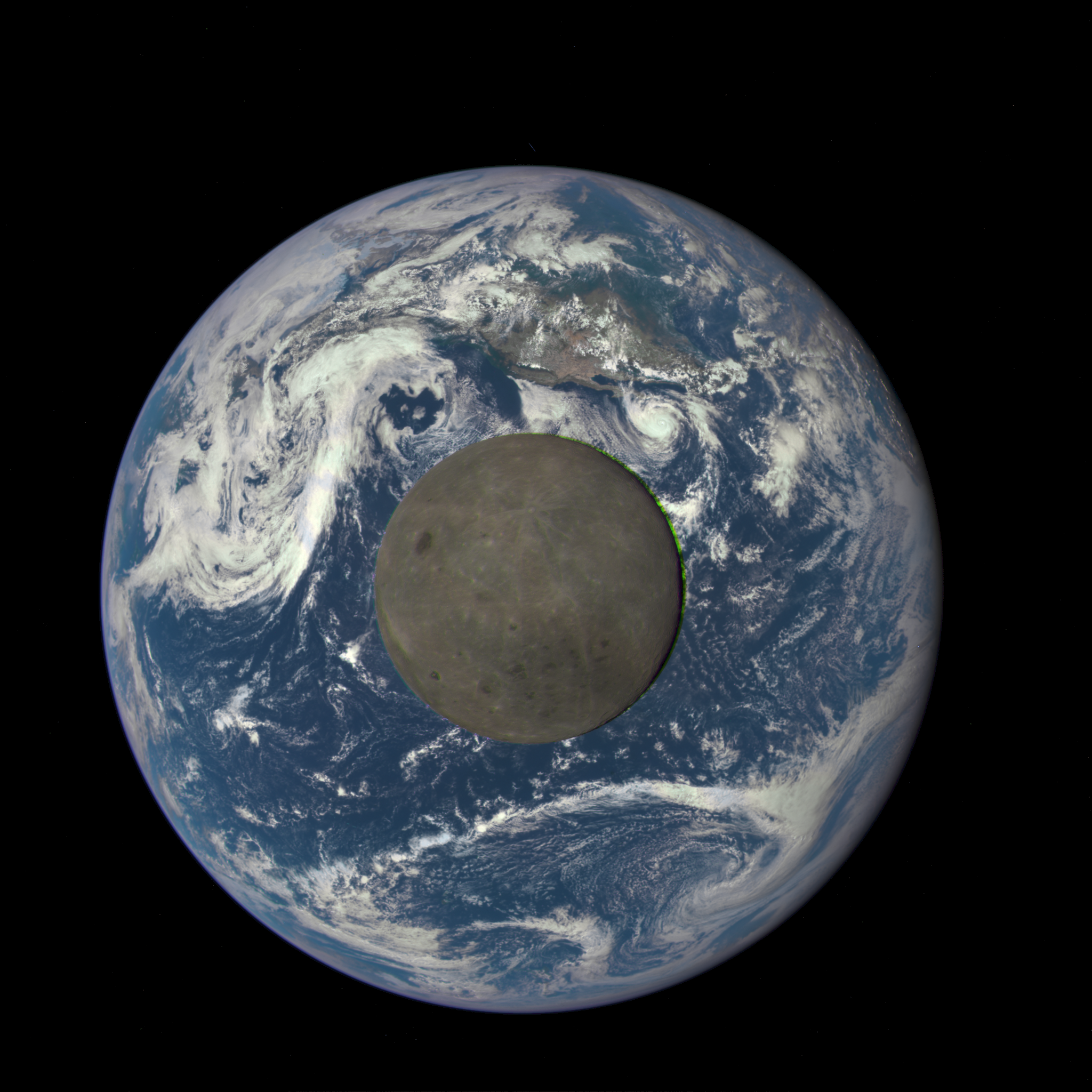
Every once in awhile, as a person who writes about space, I encounter folks who don’t believe in it. Or don’t believe we’ve ever been there, anyway. Or that our robots have been there. Or that the Earth is round (but that’s a whole other thing.) But while tweets about how “astronauts” on the “International” “Space” “Station” are actually just wearing harnesses and jumping around a soundstage in Siberia make me cringe, there’s a particular flavor of space conspiracy tweet that makes a pretty good point.

That video at the top of this post looks totally fake. Like, viral video of a guy running into a tornado to take a selfie fake. But sometimes the truth looks more Photoshopped than fiction (Case in point: This flower looks like a literal demon and it just grows that way).
The recently released images — from the second time NASA’s Deep Space Climate Observatory (DSCOVR) satellite has watched the moon pass in front of the sunlit face of the Earth in a year — look fishy, and NASA scientists realize that.
Jay Herman, the NASA Goddard scientist who oversees the satellite’s Earth Polychromatic Imaging Camera (EPIC), says he hears it all the time. But luckily, most of the critiques are easy enough to address.
[Here’s why the Earth isn’t flat (even when it looks like it is)]
First common question: If the images were taken over the course of about four hours, why don’t the clouds move?
“If you look at the smaller-scale images from that same period, you will see some small changes in the cloud movement,” Herman said. But the movements are tiny at the scale the Earth is in these photos. “All the main cloud features will look kind of stationary,” he explained.
Keep in mind that the pixels in these images are just about 20 kilometers each. For a cloud to move just five pixels in an hour, you’d need a storm with winds of about 100 kilometers an hour. That’s hurricane territory.
The Earth’s seemingly sparse rotation raises questions as well.
“It has been claimed that the Earth does not rotate enough,” DSCOVR project scientist Adam Szabo told The Washington Post in an email. “The Moon needs a month to go around the Earth while Earth spins around in 24 hours. In the lunar transit images the Moon moves a large amount while Earth rotates very little. Thus, the images are fake.”
But this, he explained, is nothing but an optical illusion.
“The Moon is much closer to DSCOVR than Earth, thus it appears to move fast,” he said. “The EPIC field of view is very narrow . . . So a very little movement of the Moon will result in the lunar disk completely crossing our full field of view.”
[After 24 years, this man came to a really sad conclusion about the Loch Ness monster]
Another question that I get a lot is why images of the Earth and the moon never have stars in them. Yes, stars are bright, but we’re actually way brighter — at least from the perspective of a camera sitting a scant million miles away. The exposure time you need to capture the Earth and the moon doesn’t capture distantly sparkling stars.
“A noteworthy thing is how much darker the moon is relative to Earth,” Szabo said. “Many people complained that it is self-evident that the Moon is very bright as we see it most of every night. The answer is that the Moon is indeed bright relative to the dark sky, but Earth is even brighter. And, of course, few of us have seen the bright disk of Earth relative the background of the dark sky.”
This, coupled with the fact that photos taken in space have no atmospheric blur — and that the lack of atmosphere on the moon gives it an edge that looks sharper than Earth’s — makes it appear to pop out, like something Photoshopped onto the picture. It doesn’t help that the moon doesn’t rotate, because it’s tidally locked to have one side facing Earth at all times. The moon, all dark and sharp, scoots across the rotating Earth like a cardboard cutout in front of a video that seems hazy in comparison. There’s no denying that the result looks a little off.
In fact, this EPIC animation of the moon would probably do less of that ostentatious popping if NASA had Photoshopped it. The scientists didn’t retouch the images at all, and that left this artifact:
The green and red bands on the right side (and less visible ones on the left) formed because the camera takes images with red, green, and blue filters separately and combines them to make living color. Because the wavelengths are snapped with a 30-second time delay among them, overlaying the resulting shots leaves a bit of a rainbow trail around the moon’s edge.
That bright-green contrast makes the dark edge of the moon stand out even more — and frankly looks like some pretty sloppy Photoshop work in its own right. One has to hope that if our tax dollars truly were funding some grand space cover-up, NASA would do a slightly better job of fooling us. But hey, space is hard.


